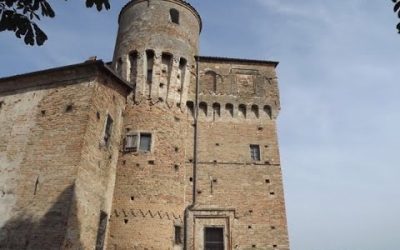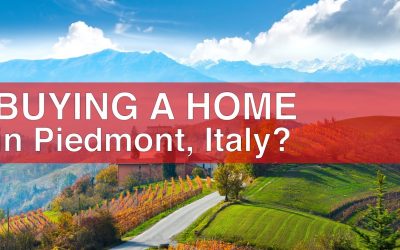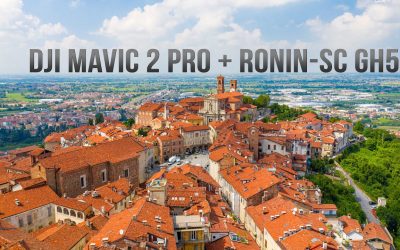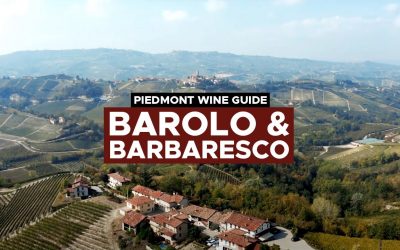Santo Stefano Belbo Travel Guide: tourist information
Welcome to Santo Stefano Belbo, a charming Italian commune nestled within the picturesque Piedmont region. Famous as the birthplace of the renowned Italian author Cesare Pavese and for the production of the globally adored Moscato d’Asti, Santo Stefano Belbo is a must-visit for lovers of literature, wine, and the serene Italian countryside. This travel guide aims to provide you with all the essential tourist information to help you plan an unforgettable journey to this quaint town and its beautiful surroundings.
| Category | Details |
|---|---|
| Location | Piedmont region, Northwestern Italy |
| Nearby Cities | Turin, Asti, Alba, Barolo |
| Transportation | Accessible by car, nearest train station in Asti |
| Main Attractions | Guido da Costigliole Restaurant, Vineyards, Historic Monuments, Walking Trails |
| Accommodations | Hotels, B&Bs, Agriturismi (farm stays) |
| Cuisine & Local Specialties | Truffles, Barolo wine, Moscato d’Asti, Traditional Piedmontese dishes |
| Best Time to Visit | Spring and Autumn (for vineyard tours and truffle hunting), Year-round for culinary experiences |
| Events & Festivals | Wine festivals, Truffle fairs, Seasonal celebrations |
| Activities | Wine Tasting, Cooking Classes, Guided Vineyard Tours, Truffle Hunting |
Santo Stefano Belbo Travel Guide: tourist information

Discover Santo Stefano Belbo, an enchanting Italian town known for its literary history and exquisite Moscato d’Asti. Explore the Piedmont region’s charm, dive into the local culture, food, and wine through our comprehensive travel guide.
Situated in Italy’s northwestern Piedmont region, Santo Stefano Belbo is an alluring town filled with cultural history and wine-making traditions. Known as the birthplace of famous Italian writer Cesare Pavese and the home of delicious Moscato d’Asti, visitors to Santo Stefano Belbo can enjoy exploring local vineyards, indulging in local cuisine, and visiting historic attractions.”
In Santo Stefano Belbo, tourists can explore the birthplace of Cesare Pavese, taste globally renowned Moscato d’Asti, hike or bike through picturesque vineyards, and immerse themselves in local festivals such as the Pavese Festival in June. With a wide range of accommodations and family-friendly activities, Santo Stefano Belbo offers an authentic and charming Italian experience for all ages.
Where is Santo Stefano Belbo located?
charming town is situated in the province of Cuneo and lies on the border of the Langhe and Monferrato regions. Santo Stefano Belbo is about 80 kilometers southeast of Turin and approximately 20 kilometers northeast of Alba. It is nestled among the beautiful hills and vineyards of the Piedmont region, known globally for its exceptional wines and breathtaking landscapes.
What is Santo Stefano Belbo known for?
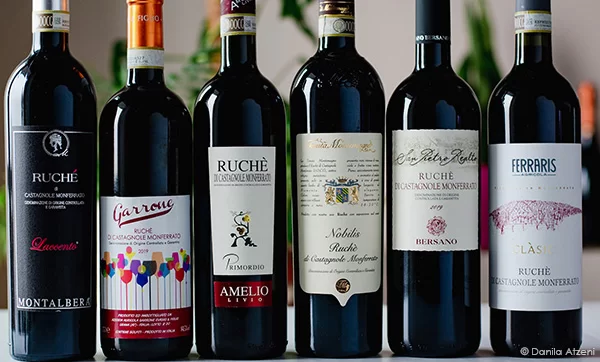
Santo Stefano Belbo, though small in size, has a rich cultural heritage and is renowned for several reasons. First and foremost, it’s celebrated as the birthplace of Cesare Pavese, one of Italy’s most significant 20th-century writers and poets. Visitors can explore Pavese’s childhood home, now a museum that houses his manuscripts, books, and personal belongings.
Moreover, Santo Stefano Belbo is nestled in one of Italy’s most esteemed wine regions, known for its exceptional and diverse range of wines. Notably, it’s located near the designated production areas for Ruchè wine, a red wine variety indigenous to the Piedmont region. This unique wine, characterized by its floral bouquet and pleasant spiciness, attracts wine enthusiasts from around the world. Wine tasting tours in and around Santo Stefano Belbo offer visitors an unforgettable experience of sampling Ruchè and other local wines, like Moscato d’Asti, directly from the vineyards and cellars where they’re produced.
Finally, Santo Stefano Belbo’s position in the beautiful hilly landscape of Piedmont, dotted with vineyards and hazelnut trees, adds to its appeal. The panoramic views, tranquil rural atmosphere, and authentic Italian charm make it a popular destination for those seeking a peaceful retreat in Italy’s wine country.
What is the best time to visit Santo Stefano Belbo?

Santo Stefano Belbo, located near Turin (1 hour and 15 minutes), Asti (30 minutes), Alba (40 minutes), and Barolo (50 minutes), like much of Piedmont, is a place that can be enjoyed at any time of the year, with each season offering its unique charm. However, the best time to visit largely depends on what you wish to experience.
- Spring (March to June): As the weather starts to warm, the vineyards begin to come to life with new growth. The landscape is vibrant and filled with colors, making it a beautiful time for sightseeing and outdoor activities. The Festa del Moscato, a wine festival dedicated to Moscato d’Asti, is typically held in May.
- Summer (June to August): Summer in Santo Stefano Belbo is typically warm but not too hot, with temperatures averaging around the mid-20s to low 30s Celsius (70s-80s Fahrenheit). This is an excellent time for vineyard tours, wine tastings, and participating in events like Pavè and Wine in July.
- Autumn (September to November): This is harvest time and arguably one of the best times to visit if you’re interested in wine. The vineyards are buzzing with activity and the changing colors of the leaves make the landscape particularly picturesque. The Ruchè Wine Festival typically takes place in September and the Fiera di San Martino, a traditional fair, is held in November.
- Winter (December to February): Winter can be quite cold and is typically the off-season for tourism in Santo Stefano Belbo. But if you enjoy quieter environments and want to experience a traditional Italian Christmas event, “Il Natale è di Casa” takes place during this time.
Regardless of when you choose to visit, make sure to check the weather forecast and event schedules ahead of your trip to prepare accordingly.
Santo Stefano Belbo in Monferrato area with a Ruchè Wine Tasting Experience
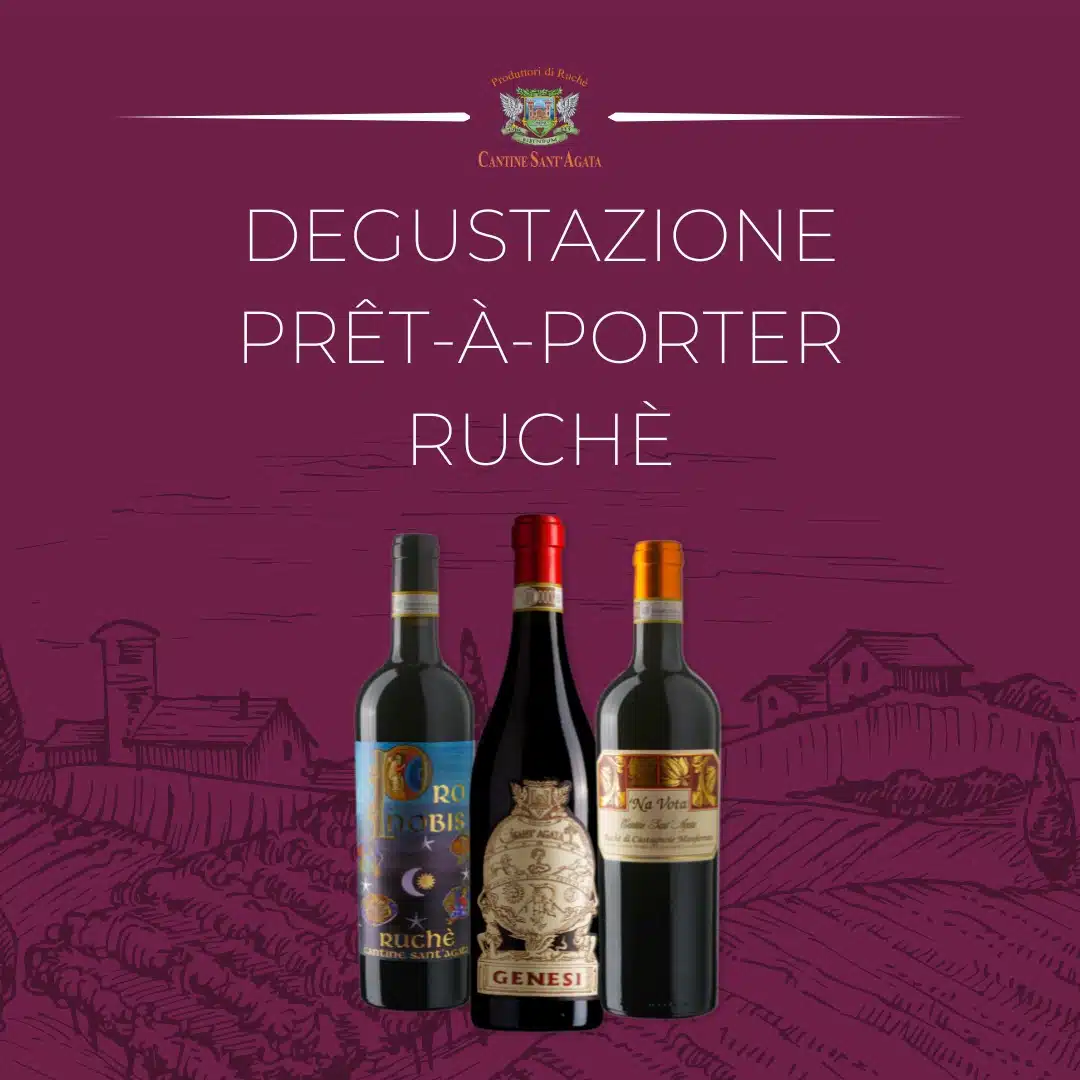
Santo Stefano Belbo, nestled in the picturesque hills of Piedmont, is renowned for its remarkable wines. While Moscato d’Asti is widely celebrated, the town is also an extraordinary place to indulge in the flavors of Ruchè – a lesser-known but truly exceptional wine variety. A Ruchè wine tasting experience in Santo Stefano Belbo offers an unforgettable journey into the heart of Italy’s famed wine culture.
Your Ruchè wine tasting adventure begins with a guided tour of a local vineyard, where you’ll discover the meticulous cultivation techniques and harvesting traditions essential to the production of quality Ruchè grapes. Walking among the sprawling vines, you can appreciate the unique terroir that endows Ruchè wine with its distinctive qualities. The pinnacle of the tour is, undoubtedly, the Ruchè wine tasting experience. Surrounded by the rustic charm of a Piedmontese cellar, you will savor different Ruchè vintages, each revealing notes of red fruits, spices, and florals. The tasting often includes a selection of regional cheeses, charcuterie, and bread, enhancing the flavors and aromas of the Ruchè wine.
Your journey continues in a traditional wine cellar where the secrets of winemaking unfold. This is where the harvested Ruchè grapes transform into the full-bodied, aromatic wine revered by many. Amid the cool, aged barrels, you will gain an understanding of the passion and expertise encapsulated in each bottle of Ruchè wine.
Best Wine Tours in Santo Stefano Belbo:
Santo Stefano Belbo, located in the Langhe region of Piedmont, Italy, is a haven for wine enthusiasts. Nestled amidst rolling hills and vineyards, this town is part of a region that’s renowned for its wine production. Here’s an introduction to wine tours you might explore in Santo Stefano Belbo:
- Moscato d’Asti Wine Tours: Santo Stefano Belbo is well-known for its production of Moscato d’Asti, a sweet and fragrant white wine. Many wineries offer tours that include walking through vineyards, visiting the cellars, and tasting this delightful wine.
- Barolo and Barbaresco Tours: While not directly produced in Santo Stefano Belbo, neighboring regions produce the famous Barolo and Barbaresco wines. You may find tours that include visits to these areas, providing a comprehensive experience of Piedmont’s wine landscape.
- Local Winery Visits: Explore the family-owned and operated wineries that often provide more intimate and personalized tours. Learn about traditional wine-making techniques, enjoy guided tastings, and perhaps even have a meal paired with the estate’s wines.
- Biking Wine Tours: For the more adventurous, some tours offer the opportunity to bike through the vineyards. This provides a unique perspective and allows you to enjoy the stunning countryside while learning about the wines.
- Gastronomic Experiences: Complement your wine tours with culinary experiences. Local cuisine paired with the wines of the region offers an unforgettable gastronomic delight.
- Seasonal Events: Keep an eye on local events and festivals that celebrate wine. Participating in these can add a unique cultural dimension to your wine-tasting experience.
- Customized Tours: Many tour operators can tailor a wine tour to your specific interests and needs, ensuring you explore the wines that most appeal to you.
Remember to book your tours in advance, especially during peak seasons, to ensure availability. Whether you’re a novice wine drinker or a connoisseur, Santo Stefano Belbo’s wine tours promise a rich and fulfilling experience, set against the backdrop of one of Italy’s most beautiful wine regions.
Where to stay in Santo Stefano Belbo? Relais San Maurizio
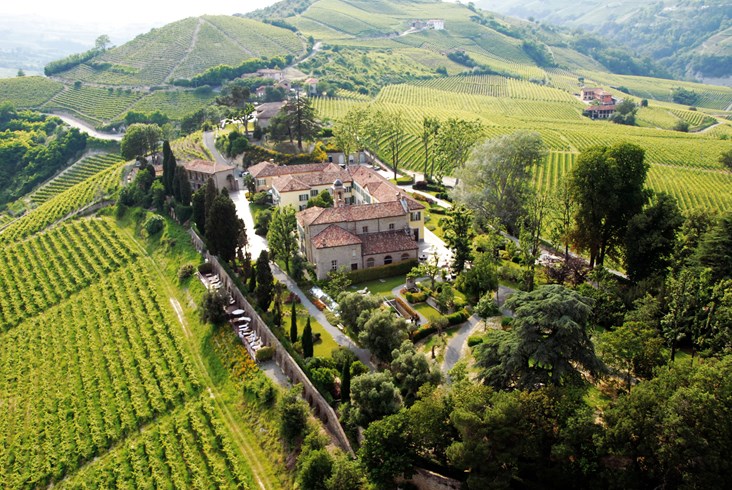
The Relais San Maurizio is a luxurious retreat nestled in the heart of Piedmont’s idyllic wine country, Santo Stefano Belbo. As part of The Leading Hotels of the World group, this establishment is renowned for its exceptional service, stunning views, and authentic Italian hospitality. Situated within a 17th-century monastery, the Relais San Maurizio merges its historical charm with modern luxury to offer an experience that is truly one-of-a-kind. With 36 rooms and suites, each individually decorated, guests are welcomed with a sense of exclusivity and tranquility. Many of the rooms offer breathtaking views of the Langhe hills, a UNESCO World Heritage site.
The hotel’s facilities are equally impressive, featuring a world-class spa, outdoor and indoor swimming pools, a Michelin-starred restaurant, and access to a variety of recreational activities including truffle hunting, Barolo wine tasting, and hot air ballooning. One of the highlights of the Relais San Maurizio is its culinary offerings. The Michelin-starred restaurant in Piedmont, Guido da Costigliole, promises an immersive journey into Piedmontese cuisine, pairing locally-sourced dishes with the region’s finest wines.
The hotel’s location in Santo Stefano Belbo is ideal for exploring the Piedmont region, renowned for its vineyards and wine production. It offers the perfect starting point for wine tasting tours and visits to local wineries. Whether you’re seeking a peaceful retreat, a gastronomic adventure, or a base to explore the Italian wine country, the Relais San Maurizio offers a unique and luxurious experience in the heart of Piedmont.
GUIDO DA COSTIGLIOLE – ITALY, SANTO STEFANO BELBO

Guido da Costigliole is an acclaimed restaurant located in the beautiful town of Santo Stefano Belbo, in the heart of the Langhe region of Piedmont, Italy. A destination for gourmands and wine lovers alike, it’s a place where culinary excellence meets the rich traditions of Italian gastronomy.
The Restaurant: Guido da Costigliole is housed in the Relais San Maurizio, a historic monastery transformed into a luxurious hotel and spa. The restaurant has earned recognition, including prestigious Michelin stars, for its creative yet rooted culinary offerings.
The Cuisine: The cuisine at Guido da Costigliole pays homage to Piedmont’s rich culinary heritage. Seasonal, locally-sourced ingredients are used to craft dishes that are both innovative and deeply traditional. Truffles, a local treasure, often feature prominently on the menu, along with other regional specialties.
The Wine: Being situated in one of Italy’s most renowned wine regions, the restaurant offers an extensive wine list. Guests can enjoy pairings with local wines, including Barolo, Barbaresco, and Moscato d’Asti, guided by the expertise of the sommelier.
The Experience: Dining at Guido da Costigliole is not merely a meal but an experience. The elegant décor, attentive service, and breathtaking views of the surrounding vineyards and hills all contribute to an unforgettable culinary journey. Cooking classes and wine tastings may also be offered, allowing guests to delve deeper into the flavors of the region.
How to Visit: Visiting Guido da Costigliole would be a highlight for anyone touring the Langhe area. Reservations are strongly recommended, especially during peak seasons. The restaurant’s location in Santo Stefano Belbo makes it accessible from major nearby cities like Turin and Asti, either by car or arranged transportation.
How can I get to Santo Stefano Belbo by?
If you’re flying into Italy, the nearest airports are in Turin and Genoa. From these cities, you can take a train to Asti or Alba, and then a bus or taxi to Santo Stefano Belbo. Car hire services are also readily available at these airports. Getting to Santo Stefano Belbo can be accomplished by various modes of transportation, depending on your starting location.
- By Air: The nearest major airports are Turin Airport (about 105 km away) and Milan Malpensa Airport (about 170 km away). Both offer several international and domestic flights.
- By Train: The closest train stations are in Asti and Alba. From there, you can take a taxi or a local bus to reach Santo Stefano Belbo. Please note that train connections may involve a change in Turin or Asti.
- By Bus: Local bus services are available from Asti and Alba, though they are relatively infrequent. Check the timetable in advance to plan your journey accordingly.
- By Car: If you’re traveling by car, Santo Stefano Belbo is conveniently located near the A33 motorway. The town is about a 30-minute drive from Asti and a 40-minute drive from Alba.
- By Private Taxi: For convenience and ease of travel, consider hiring a private taxi from Asti. The taxi services in Asti provide comfortable transportation directly to Santo Stefano Belbo. This can be a good option if you’re traveling with luggage or in a group. You can arrange this service in advance to ensure a smooth journey.
Traveling by car from Santo Stefano Belbo to Turin, Asti, Alba, and Barolo allows you to explore the beautiful landscapes and culinary delights of the Piedmont region in Italy. Here’s a brief overview of the travel details:
- Santo Stefano Belbo to Turin: Distance: Approximately 80 kilometers (50 miles) Travel Time: About 1 hour and 15 minutes Route: Take the A6 and A21 highways to reach Turin. The city is renowned for its rich history, stunning architecture, and lively cultural scene.
- Santo Stefano Belbo to Asti: Distance: Approximately 20 kilometers (12 miles) Travel Time: About 30 minutes Route: The shortest route to Asti is via the SP592. Asti is famous for its sparkling wine and offers various wine-related experiences.
- Santo Stefano Belbo to Alba: Distance: Approximately 30 kilometers (18 miles) Travel Time: About 40 minutes Route: Taking the SP3 is usually the most direct route to Alba. Alba is known as the truffle capital of Italy, and visiting during the truffle season is highly recommended.
- Santo Stefano Belbo to Barolo: Distance: Approximately 40 kilometers (25 miles) Travel Time: Around 50 minutes Route: Travel via the SP3 and SP12 to reach Barolo, the home of the world-famous Barolo wine. Touring the local vineyards and tasting this revered red wine is a must.
These drives offer picturesque views of vineyards, hills, and historic towns. Ensure to check for any specific travel requirements, road conditions, and local attractions to make the most of your trip.
Remember to check and adhere to the travel advisories and regulations related to COVID-19 when planning your trip.
What are the top attractions in Santo Stefano Belbo?
Some of the major attractions in Santo Stefano Belbo include the Cesare Pavese Foundation and his birthplace, the Tower of the Belbo, and the wine cellars that offer Moscato d’Asti tastings.
What can I do in Santo Stefano Belbo?
Aside from visiting the local attractions, you can also participate in wine tours and tastings, go hiking or biking through the vineyards, and indulge in the local cuisine at various restaurants.
Are there accommodations in Santo Stefano Belbo?
Yes, there are several bed and breakfasts, agriturismos, and hotels in and around Santo Stefano Belbo. These accommodations are often charming and offer a true taste of Italian hospitality.
What is the food and drink like in Santo Stefano Belbo?
Santo Stefano Belbo is famous for its wines, particularly Moscato d’Asti. The cuisine is typical of the Piedmont region, with delicious dishes like agnolotti pasta, brasato al Barolo (beef braised in Barolo wine), and delectable hazelnut desserts.
Can I visit vineyards in Santo Stefano Belbo?
Absolutely, visiting vineyards is one of the main attractions in Santo Stefano Belbo! The town and its surrounding area are famous for the production of Moscato d’Asti, a sweet white wine, and Ruchè, a unique red wine, which means that vineyard tours and wine tastings are plentiful here.
Several wineries in Santo Stefano Belbo offer tours that not only include tastings of their products but also offer a deep dive into the winemaking process, where visitors can learn about the cultivation of grapes, the wine production process, and the wine’s history in the region.
Here are a few vineyards you might consider visiting:
- Azienda Agricola Marco Dogliotti: This family-run winery specializes in Moscato d’Asti. Their vineyard tours provide insight into the process of producing Moscato and usually end with a tasting of their wines.
- Azienda Agricola Rivetti Massimo: Besides Moscato, this winery also produces Barbera d’Asti and Dolcetto d’Alba. A tour here includes a walk in the vineyards, a visit to the wine cellar, and a tasting of their wines.
- Cantina del Ruchè: As the name suggests, this winery specializes in Ruchè wine. Their tours not only offer a chance to taste this rare red wine but also to learn about its history and production methods.
What is the shopping like in Santo Stefano Belbo?
The town has a range of shops where you can buy local products such as wines, cheeses, and other typical Piedmontese items.
What are the nearby towns or cities to visit from Santo Stefano Belbo?
Nearby towns worth visiting include Alba, famous for its truffles; Asti, known for its sparkling wine and Palio horse race; and Barolo, which is renowned for its high-quality wine.
Is Santo Stefano Belbo family-friendly?
Yes, Santo Stefano Belbo is indeed a family-friendly destination. The town and the surrounding region of Piedmont offer a range of activities that cater to all ages, making it a great place for a family vacation.
Outdoor adventures: Santo Stefano Belbo is surrounded by beautiful landscapes that invite exploration. Families can enjoy leisurely walks or bike rides through the vineyards, or along the paths of the Langhe and Monferrato hills. The River Belbo also offers opportunities for fun outdoor activities.
Educational activities:
For families interested in cultural and educational experiences, Santo Stefano Belbo offers plenty. The birthplace of Cesare Pavese, one of Italy’s most renowned 20th-century poets, is now a museum. Here, families can learn about Pavese’s life and work. Additionally, a visit to the vineyards and wineries offers a chance for older children and teens to learn about the winemaking process.
Food and wine: While Piedmont is internationally recognized for its wines, the region also offers a culinary scene that caters to all ages. The area is renowned for its high-quality cheese, pasta, meats, and, of course, the Nutella spread, a favorite amongst many children. The region also produces excellent ice cream, another family-friendly treat.
Festivals and events: Santo Stefano Belbo hosts various festivals and events throughout the year, many of which are family-friendly. These include the Festa del Moscato in May, the Pavè and Wine event in July, and the “Il Natale è di Casa” Christmas event.
Accommodation:
You’ll find a range of family-friendly accommodation options in and around Santo Stefano Belbo, from hotels to farm stays, many of which offer facilities like swimming pools and play areas for children.
Always ensure to check with individual attractions, accommodations, and event organizers to confirm the availability and suitability of their offerings for your family’s needs and interests.
What festivals or events are held in Santo Stefano Belbo?
Santo Stefano Belbo, being in the heart of Italy’s wine country, naturally hosts a number of wine-related festivals and events throughout the year. Additionally, it celebrates traditional Italian festivals and events that reflect the local culture and history. Here are some of the notable ones:
- Festa del Moscato: This festival is usually held in May and is dedicated to Moscato d’Asti, the local sweet white wine. The festival features tastings, food pairings, and a variety of events related to Moscato wine.
- Ruchè Wine Festival: Celebrated usually in September, this festival honors Ruchè, a unique red wine produced in the region. The festival offers wine tastings, gastronomic stalls, and often includes traditional music and dances.
- Fiera di San Martino: This is a traditional fair held in November to celebrate Saint Martin. It often includes a variety of stalls selling local food, wine, crafts, and more.
- Pavè and Wine: Held in July, this event combines the passion for cycling with the love for wine and local food products. The route passes through scenic vineyards and ends with a wine and food tasting.
- The Itinerary of Taste: An event that usually takes place in October, involving a tour of the local cellars with tastings of wines and typical products.
- Il Natale è di Casa: A Christmas event that involves the entire municipality, with markets, shows, concerts, and food and wine itineraries.
Remember that dates can change from year to year and some events may be canceled or altered due to weather or other circumstances, including COVID-19 restrictions. It’s always a good idea to check the event’s website or contact the local tourism office for the most up-to-date information.
What is the weather like in Santo Stefano Belbo?
Santo Stefano Belbo experiences warm, dry summers and cold, wet winters. Spring and autumn are mild and generally considered the best times to visit.
Can I rent a car in Santo Stefano Belbo?
While there are no car rental companies directly in Santo Stefano Belbo, there are several in the nearby cities of Asti and Alba, making car hire an easy process for those wishing to explore the region further. Discover the best card rental in Italy.
Io vengo di là #17 | Pavese trails in Santo Stefano Belbo

FAQ About Santo Stefano Belbo:
- Do I need to know Italian to visit Santo Stefano Belbo? While it’s always helpful to know a few phrases in Italian, most people in the tourism and hospitality industry will speak English.
- Is Santo Stefano Belbo accessible for people with disabilities? Like many old Italian towns, accessibility may be limited in certain areas. However, most of the wineries and larger restaurants are likely to be accessible.
- Are credit cards widely accepted in Santo Stefano Belbo? Yes, credit cards are accepted in most places, but it’s a good idea to carry some cash for smaller establishments or markets.
- Is Santo Stefano Belbo a good base for exploring the Piedmont region? Yes, its central location makes it a convenient base for exploring other towns and cities in Piedmont.
- Are pets allowed in accommodations and public places in Santo Stefano Belbo? Policies on pets vary by establishment, so it’s best to check in advance.
- What type of power outlets are used in Santo Stefano Belbo? Italy uses type C, F, and L power outlets. Visitors from abroad may need a travel adapter.
- Is tap water safe to drink in Santo Stefano Belbo? Yes, the tap water is generally safe to drink.
- Can I travel to Santo Stefano Belbo during COVID-19? Current travel advisories and restrictions should be checked before planning your trip.
- Is there medical care available in Santo Stefano Belbo? There are pharmacies and small medical centers in the town. Hospitals are located in nearby cities.
- Is there public transportation within Santo Stefano Belbo? Public transportation is limited, and the town is small enough to explore on foot. A car is recommended for exploring the surrounding area.
